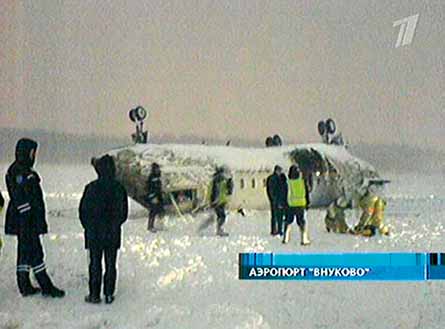Russian investigators have again blamed icing for the crash of a corporate Bombardier CRJ regional jet during departure from Moscow Vnukovo two years ago.
The US-registered CRJ100SE aircraft, operated by Nabban Investment, was heading to Berlin for servicing, but lost lift immediately after becoming airborne from runway 06.
Its right wing contacted the runway surface and the aircraft overturned before catching fire. Snowy conditions and a crosswind had prevailed at the time, and the temperature was about minus 6°C.
Russia's Interstate Aviation Committee (MAK) believes that, while the aircraft underwent de-icing before the 13 February 2007 flight, the timing and method of the procedure did not result in adequate protection.
MAK also compared the take-off by the Vnukovo CRJ with 30 other previous departures by the same aircraft, and found that the parameters "different in all indices" from the average. The aircraft rotated early and the pitch rate on rotation, for example, was double the recommended 3° per second for cold-weather conditions.
 |
|---|
Analysis of the flight indicates that the loss of lift was asymmetric. The CRJ started rolling left as it took off, reaching a bank of 29°, then rolled to the right as the crew attempted to stabilise the aircraft. It reached a right bank of 81° before the wing-tip hit the runway. Despite the destruction of the jet, all three occupants survived.
MAK has already attributed to icing the similar loss of a Belavia CRJ100 at Yerevan, almost exactly one year after the Vnukovo crash. In its final report into the Vnukovo accident, it also highlights four other incidents between 2002 and 2007 which have occurred under similar circumstances.
Source: Air Transport Intelligence news























